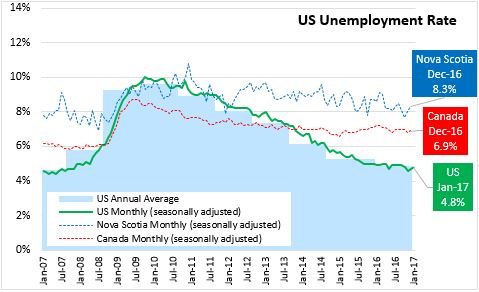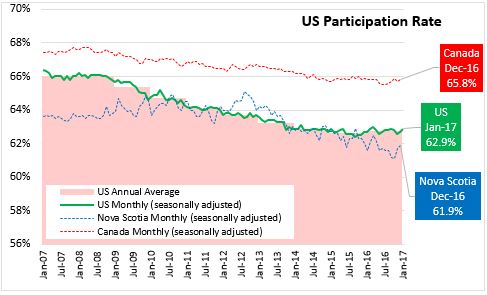The Economics and Statistics Division maintains archives of previous publications for accountability purposes, but makes no updates to keep these documents current with the latest data revisions from Statistics Canada. As a result, information in older documents may not be accurate. Please exercise caution when referring to older documents. For the latest information and historical data, please contact the individual listed to the right.
<--- Return to Archive
For additional information relating to this article, please contact:
February 03, 2017US EMPLOYMENT, JANUARY 2017 US non-farm employment rose +227,000 in January, bettering the revised gain of 157,000 reported in December. Over the previous 12 months, employment increased by an average of +187,000 per month.

Retail trade (+46,000), construction (+36,000), finance (+32,000), professional/technical services (+23,000), food services (+30,000) and health care (+18,000) all reported job gains while there was little change of employment in other sectors of the economy.
The US civilian labour force increased 76,000 in January, and the unemployment rate stood at 4.8 per cent.
In comparison, the NS unemployment rate for December was 8.3 per cent while Canada's was 6.9 per cent. Although monthly unemployment rates are more variable in Nova Scotia (smaller sample size) the long run average of NS unemployment rates is typically higher than the US, except during the 2009 recession.

The US employment rate was unchanged up to 59.9 per cent in January. This is higher than the NS December employment rate of 56.8 per cent, which has been trending down as the NS population ages more into traditional retirement years.

The US participation rate rose again in January to 62.9 per cent. The NS participation rate in the labour force has also been trending down (61.9 per cent in December); this change did not coincide with the recession but rather with aging of the population.

Note: NS and US labour force statistics refer to different working-age cohorts.
Source: US Bureau of Labor Statistics, Statistics Canada CANSIM table 282-0087
<--- Return to Archive